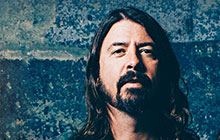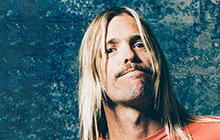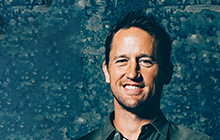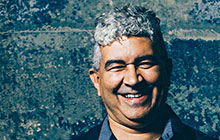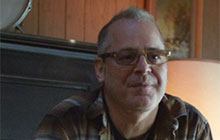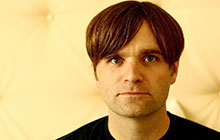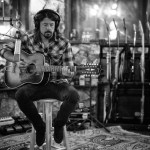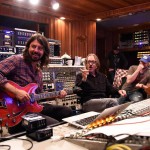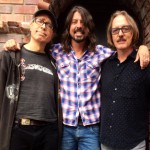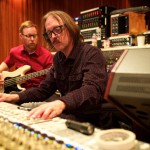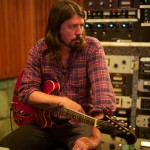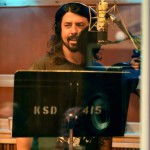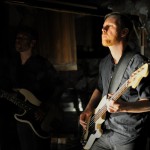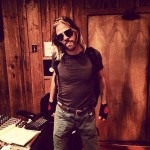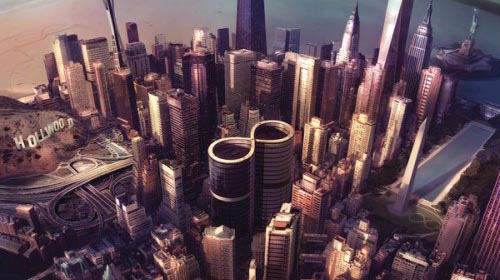Session Information
Whilst some of the locations chosen for the Sonic Highways recording tour were because the band hadn’t previously had a connection with that place, that was not the case for the very last stop – Seattle, Washington. Having only visited briefly once before Dave Grohl moved to the city in late 1990 when he joined Nirvana, although he would spend his first few months in Olympia, an hour further south. Later moving into the big city itself he would experience both highs and lows whilst living there. The high of success with Nirvana briefly becoming the biggest band in the world, followed by the lows of Kurt Cobain’s tragic death. “Seattle is like my phantom limb” believes Grohl.
Whilst he had visited several studios in the city over the years there was one which just made the most sense for Grohl to return to for this project – Robert Lang Studios. “It’s this strange underground studio in the north of the city that was right down the street from my house,” said Grohl of the recording venue. By 1994 Dave was living in a house just down the street from the studio and on his recommendation, Nirvana booked into the studio in January 1994 to record what would be their last ever recording session. “Not long after we recorded there Kurt died, and I didn’t want to make music anymore” explained Grohl. “Time went on and I thought ‘Wait, music is the one thing that’s gonna help me start over. It’s gonna heal me, so that’s what I have to keep doing”.
As covered earlier in this book various circumstances led to Grohl returning to that same studio in October 1994, recording what would become the first Foo Fighters record - “My life started over again”. That notion of starting over is what Grohl planned to focus the episode on, as well as the lyrics of the song they would eventually record at Robert Lang Studios.
For the final recording session of the album the process was now a well-oiled machine. Day one was spent loading in equipment and setting up whilst Dave conducted some initial interviews, then day two is when recording could begin. Coming off the back of recording at Preservation Hall in New Orleans, which was not a professional recording studio, things were far easier for engineers and producers being back in a place that very much was. With no problems finding an acoustic sweet spot and no concerns about outside interference, the band got right down to work laying down some live takes of the song chosen for Seattle, ‘Subterranean’. With a base to work from, it was then the usual process of recording overdubs and tweaking the initial tracks.
When it came to drums on the song, Grohl had a very specific treatment in mind for the sounds and after some initial recordings, neither he nor producer Vig was entirely happy with what was being produced from the main room at Langs. Vig suggested they move the kit into one of the smaller rooms at the studio to potentially achieve the dryer sound they desired whilst Hawkins suggested they utilize a drum recording separation technique. “Cymbal separation technique is where you do the drums separately from the cymbals,” explained Hawkins. “It gives you the ability to manipulate the sounds of the drums even more because you’re not dealing with the bleed of the cymbals.”
Hawkins’ idea won out and his kit in the main room had the cymbals removed, with large insulation walls surrounding him on all sides to prevent sound leakage as much as possible. Towels were also placed on all the drum heads to further deaden the sound. Grohl was set up in a smaller isolation room, just three cymbals and a hi-hat in front of him.
The pair had fun with the notion of playing live in such a fashion before getting down to the task at hand. The results were desirable, with the separation allowing the drum sound to be tweaked and give the results they desired - giving ‘Subterranean’ a sound not found on the other seven songs.
Recording of the rest of the song was trouble free, and as had been the case throughout, lyrics came last. Whilst one of the ideas behind the Sonic Highways project was to write lyrics about other people’s experiences and stories rather than himself, the lyrics in Seattle were unavoidably personal as Grohl reflected on his experiences in the city. Studio owner Lang believed the words (and song as a whole) were “very spiritual”. One of the lines in the song, ‘God In The Stone’, was Grohl referencing a piece of marble in the studio that many believe has an image of Christ in the patterns.
With Barrett Jones playing such an important role in Grohl’s Seattle story and early recording history, including his times recording at Robert Lang Studios, it was only right that he also featured on the song, recording a spacey guitar track utilizing an e-bow device.
The final guest musician to record for the album was Ben Gibbard of Death Cab For Cutie. He had, like many musicians, been invited to the studio initially just to conduct interviews with Grohl about the city and his experiences. The pair chatted extensively, Gibbard explaining among other things how he as a teenager had dealt with the death of Kurt Cobain. Moved by his honesty and emotion, Grohl invited him to perform on the song. Gibbard felt flattered, but initially concerned his “tiny, reedy voice” would not suit a heavy rock band.
His mind was put to rest when he heard the song, however, recalling that he and Grohl recorded some “Beatle-esque harmonies” which he was very proud of. “It’s a really beautiful song,” said Gibbard. “It reminds me of Notorious Byrd Brothers-era soft psych.”
Gibbard was also impressed to see the way the band worked together in the studio, even after being together for over twenty years. “It’s refreshing and cool to see a band that’s been around as long as they have, and you get the sense they enjoy hanging out with each other,” Gibbard said of his observations. “It’s very easy for bands to get jaded. I’m sure they have things that they bitch about. But it’s refreshing to see Dave be like, ‘I’m gonna go do vocals now’ and have Taylor and Nate go, “We’ve gotta go check this out!” As if they’ve never heard the guy sing a vocal before!”
Recording wrapped up in Seattle at the end of May 2014 and with that, work on Foo Fighters eighth studio album was almost complete. All eight tracks were taken to Atomic Sound in Brooklyn, New York for mixing, utilizing their Neve VR20 recording desk. The record was then mastered by Gavin Lurssen at Lurssen Mastering in Los Angeles. Whilst some of the songs had already been released as promotional singles to coincide with each episode of the documentary, the complete ‘Sonic Highways’ album saw release on November 10th, 2014.
